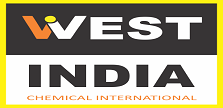CHEMICAL VALUABLE WORD :
ACGIH is the American Conference of Governmental Industrial Hygienists. It recommends upper limits (called TLVs) for exposure to workplace chemicals.
A carcinogen is a substance that causes cancer.
The CAS number is assigned by the Chemical Abstracts Service to identify a specific chemical.
A combustible substance is a solid, liquid or gas that will burn.
A corrosive substance is a gas, liquid or solid that causes irreversible damage to human tissue or containers.
DEP is the Department of Environmental Protection.
DOT is the Department of Transportation, the federal agency that regulates the transportation of chemicals.
EPA is the Environmental Protection Agency, the federal agency responsible for regulating environmental hazards.
A fetus is an unborn human or animal.
A flammable substance is a solid, liquid, vapor or gas that will ignite easily and burn rapidly.
The flash point is the temperature at which a liquid or solid gives off vapor that can form a flammable mixture with air.
HHAG is the Human Health Assessment Group of the federal EPA.
IARC is the International Agency for Research on Cancer, a scientific group that classifies chemicals according to their cancer-causing potential.
A miscible substance is a liquid or gas that will evenly dissolve in another.
mg/m3 means milligrams of a chemical in a cubic meter of air. It is a measure of concentration (weight/volume).
A mutagen is a substance that causes mutations. A mutation is a change in the genetic material in a body cell. Mutations can lead to birth defects, miscarriages, or cancer.
NAERG is the North American Emergency Response Guidebook. It was jointly developed by Transport Canada, the United States Department of Transportation and the Secretariat of Communications and Transportation of Mexico. It is a guide for first responders to quickly identify the specific or generic hazards of material involved in a transportation incident, and to protect themselves and the general public during the initial response phase of the incident.
NCI is the National Cancer Institute, a federal agency that determines the cancer-causing potential of chemicals.
NFPA is the National Fire Protection Association. It classifies substances according to their fire and explosion hazard.
NIOSH is the National Institute for Occupational Safety and Health. It tests equipment, evaluates and approves respirators, conducts studies of workplace hazards, and proposes standards to OSHA.
NTP is the National Toxicology Program which tests chemicals and reviews evidence for cancer.
OSHA is the Occupational Safety and Health Administration, which adopts and enforces health and safety standards.
PEL is the Permissible Exposure Limit which is enforceable by the Occupational Safety and Health Administration.
PIH is a DOT designation for chemicals which are Poison Inhalation Hazards.
ppm means parts of a substance per million parts of air. It is a measure of concentration by volume in air.
A reactive substance is a solid, liquid or gas that releases energy under certain conditions.
A teratogen is a substance that causes birth defects by damaging the fetus.
TLV is the Threshold Limit Value, the workplace exposure limit recommended by ACGIH.
The vapor pressure is a measure of how readily a liquid or a solid mixes with air at its surface. A higher vapor pressure indicates a higher concentration of the substance in air and therefore increases the likelihood of breathing it in.





